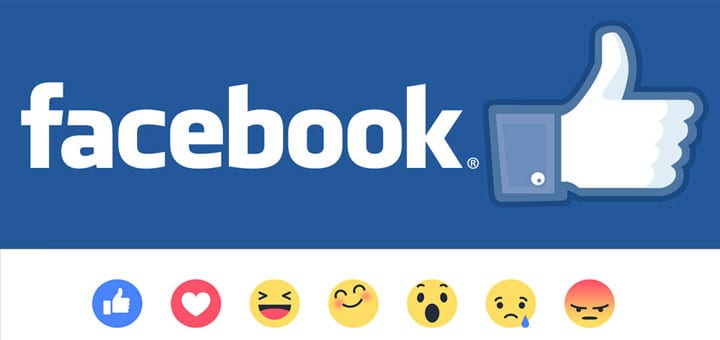
Back in February 2009 when Facebook launched the ‘like’ button function, amongst the excitement and intrigue from users came a collective question: “where is the dislike button?” Seven years on, Facebook has finally caved in to demands and given the world what it asked for… kind of.
On 24th February the new ‘Reactions’ feature went live. Developing the original ‘like’ button, Facebook users can now give an emotionally extended response to posts; along with the original ‘like’, people are now free to express love, laughter, surprise, sadness or anger. Each Reaction is illustrated by a unique animated emoji and can be accessed by holding down the thumbs up icon to unlock the hidden emotions.
Mark Zuckerburg was the first to reveal the new feature as he took to his own personal Facebook page, announcing: “Today is our worldwide launch of Reactions – the new like button with more ways to express yourself. Our community has been asking for a dislike button for years, but not because they want to tell friends they don’t like their posts. People wanted to express empathy and share a wider range of emotions”.
Zuckerberg’s claim that the communal call for a dislike button came due to a general wish to express sadness and empathy is certainly questionable. In a blog post, Facebook explained the Reactions were the results of extensive global research groups set out to determine “what types of reactions people would want to use most.” When the public call for a simple dislike button had been made so clear, why did Mark and the gang resort to such extensive, comprehensive research? The real reason, it would appear, is that Facebook wanted to avoid the risks associated with introducing such an inherently negative feature.
Facebook has been heavily criticised in the past for producing a negative social impact. During a live-streamed Q&A in September 2015, Zuckerberg explained he had avoided adding a dislike button to stop users easily criticising each other (although this was left out of all official Facebook statements). Ultimately Reactions were designed to offer more than just a simple ‘like’ while keeping the opportunism for negative behaviour minimal.
So just how have users received Reactions? The reception has been varied to say the least. While some welcome the opportunity to love their friends’ new profile picture, laugh at funny animal videos and express shock at Trump’s continued election successes, many feel the reactions on offer are basic and childish.
While the majority have expressed mixed feelings about the addition to the site, one particular group of internet users have been extremely enthusiastic about the advent of this new feature – the digital marketers. Advertisers now have immediate access to insights regarding their social media content and can amend and improve their digital presence accordingly. The new levels of marketing insight the Reaction buttons offer have even led some to believe there are hidden agendas for the new feature.
Forbes magazine suggests the ulterior motive for the Facebook Reactions is to garner richer data that can then be used to tailor ads that appear on user’s newsfeeds. They also suggest Facebook will soon use Reactions within its algorithm to rank the position of posts and how they appear on the site.
Whether Facebook Reactions was created in response to the people’s requests or as an analytics tool for the businesses remains to be see. One thing’s for sure, though – like all big Facebook updates and changes, in a matter of weeks users will have become so accustomed to the addition that they’ll struggle to remember life with only a ‘like’…
